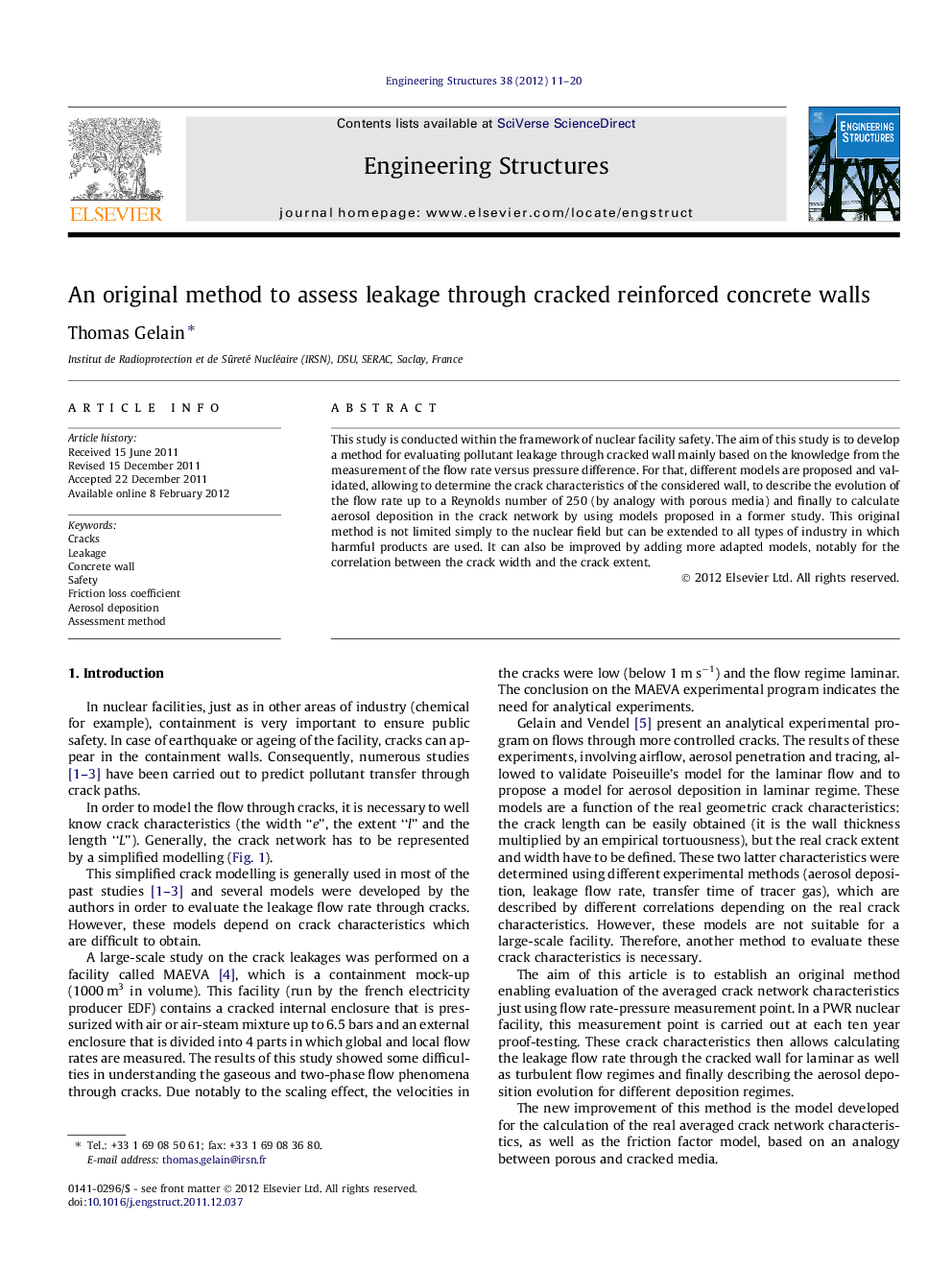| Article ID | Journal | Published Year | Pages | File Type |
|---|---|---|---|---|
| 267545 | Engineering Structures | 2012 | 10 Pages |
This study is conducted within the framework of nuclear facility safety. The aim of this study is to develop a method for evaluating pollutant leakage through cracked wall mainly based on the knowledge from the measurement of the flow rate versus pressure difference. For that, different models are proposed and validated, allowing to determine the crack characteristics of the considered wall, to describe the evolution of the flow rate up to a Reynolds number of 250 (by analogy with porous media) and finally to calculate aerosol deposition in the crack network by using models proposed in a former study. This original method is not limited simply to the nuclear field but can be extended to all types of industry in which harmful products are used. It can also be improved by adding more adapted models, notably for the correlation between the crack width and the crack extent.
► In this study, I propose a method for assessing leakage through a cracked concrete wall of the nuclear facility. ► I propose model for estimating friction loss coefficient by analogy with porous media. ► I validate the method on experimental cases of cracked concrete walls. ► I conclude by the use of this method on different experimental cases.
